
Manson produce nine different anchor styles, none of which is an original design: a CQR (“Plough”), a Bruce/claw (“Ray”), two Danforth variants, several symmetrical ship anchor patterns, and lastly a Rocna type (“Supreme”). This article, the professional opinion of the latter anchor’s designer Peter Smith, concerns the Supreme specifically.
History
The Manson “Supreme” is a variant of Peter Smith’s anchor design. Manson Anchors is located near the latter’s home in Auckland NZ. In 2004 Smith talked with Manson concerning licensing his new design. Seven months later Manson launched a new product identical in function with a few small variations.
Originals vs. Variants and Copies
Original anchors are generally superior to the copies, since the copies have limited ways in which to differentiate themselves in the market. The usual manner is to sell at a lower price, which requires reduced costs. Normally there is a good reason for the cost of the original; copies take obvious construction short-cuts, such as cheaper methods of fabrication, which the original manufacturer elected not to. These compromises result in a more attractive retail price, but the axiom “you get what you pay for” has never been truer.
Build quality compromises have consequences to strength and durability. Further differences are obvious in performance failings. The section below outlines a few of these major differences as viewed by Peter Smith.
Manson’s Rocna Look-Alike
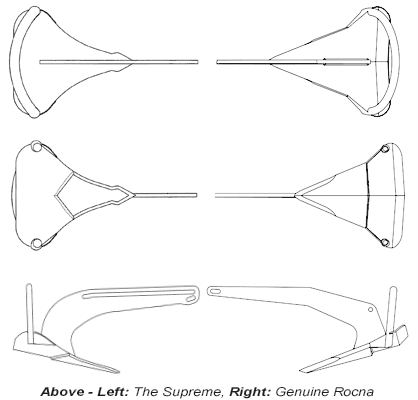
“[The Manson Supreme is] very similar to the Rocna but with the superficial inclusion of a slot for tripping the anchor in rock. The advantages of this are questionable as it could be argued that it weakens the shank. This is virtually a copy… although some tests have shown it not to perform as well.”
– Blue Water Supplies discussing the merits of new generation anchors.
“Manson’s Supreme anchor, launched last year, is similar to the Rocna design. It also copies Sarca’s shank slot…”
– Yachting Monthly in their December 2006 write-up of the West Marine anchor comparison testing. The testers commented that while the Supreme performed well at first, “at other locations it wasn’t quite as steadfast”. The article and full results are available below.
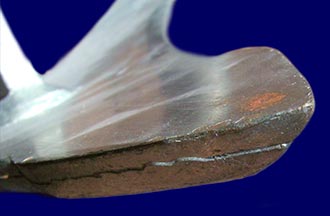
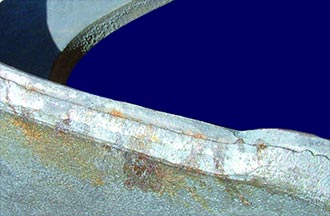
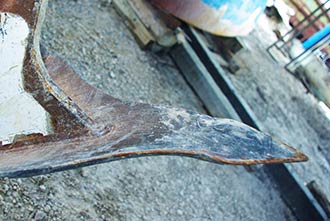
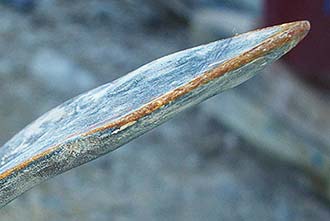
There are several fundamental aspects of the original design which are its defining characteristics. In the form of the genuine article, they are refined and have been in testing since 2000. The Manson Supreme mostly also possess these characteristics, but not in the form intended by the designer and suffering from significant construction alterations.
The skids are the plates attached to the back of the fluke and are intended to help the anchor set. On the Manson Supreme, they are quite different and do not function correctly per the designer’s intent, particularly in a loose substrate such as coral sand or soft mud.
The shank design is another area of alterations, a consequence mostly of the full length slot it features. It is much taller than ideal, placing weight undesirably high and creating behavioral problems on bow rollers.
The Manson Supreme blade is a 1-dimensional roll, rather than a 2-dimensional fold. This means the tip of the fluke is relatively flat, and does not feature the reinforcement of the full-length crease that the original employs.
Furthermore, the toe of the Supreme’s fluke is laminated. Steel laminate does not benefit from this technique as other materials do when glued together. Manson edge-weld two thinner metal plates together, leaving a hollow space between the faces, so the strength is far less than the solid steel of the original. The tip, hung on rock or some obstacle, may bend easily. Galvanizing (or re-galvanizing by the owner in the future) can create issues as the plates can be blown apart by the heat of the bath. This is a vulnerable and critical part of the anchor.
The problems with the laminated fluke do not end with just the tip of the anchor, as the shank is also welded only to the top layer of this steel sandwich, reducing the effective strength of this essential attachment. The shank, through which the entire force of the boat’s pull is transferred, is joined only to the upper face of the comparatively thin and flat plate, with no other apparent reinforcement or structural tie to the rest of the anchor.
Lastly in this brief overview, tip-weight is an important characteristic of any anchor. Many anchor designs resort to dedicated tip-weight in the form of lead inserts. The original design’s weight-on-tip is around 33% of the total mass of the anchor. The Manson Supreme version should be similar – however, it is much lower, varying inconsistently between 17% and 23% depending on the size.
Possibly in an attempt to compensate for this flaw, which adversely affects setting, Manson have made the fluke edge of the Supreme very sharp. While this slightly assists setting performance, it is not a practical solution, as the galvanizing will not last on such sharp edges. Once worn off, the edges themselves will quickly rust away, and the benefit is lost.
Relative Performance of the Manson Supreme
“I tried to get out on the cheap by buying a Manson Supreme anchor, as opposed to a Rocna, for my main anchor. Both anchors have very good ratings. Over the last few months I have not been able to get the Manson to really set well once. Not once! So after using only the Rocna during my month in the Bahamas on Vick’s 55' cat, I decided to sell my Manson and get the Rocna. I can’t believe it! The anchors look the same. The Rocna has set first time every time so far and I’ve even anchored in the same places that the Manson dragged. It bites instantly. There’s no discernable boat movement as you pull the anchor into the bottom. Diving on the anchor has shown that it’s completely buried with only the chain leading back to the boat. Who would have thought that two so very similar anchors would perform so very differently.”
– www.klutch-kargo.com (SV Felix, USA) on experience with both anchors in identical conditions
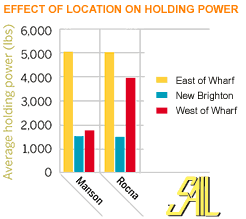
While most of the issues concerning the Supreme relate to design, strength, and durability, tangible consequences to performance of the end product have also surfaced.
There have been only several comprehensive independent anchor tests including the Manson Supreme that can claim a degree of scientific validity. West Marine conducted one in 2006, covered in print by SAIL magazine in the USA and Yachting Monthly in the UK, in addition to West Marine’s annual catalog. Results compared to the genuine anchor are graphed here.
West Marine hinted at inconsistent performance, writing that the Supreme “in six pulls never held less than 2,300 lb, and held over 5,000 lb three times”
. On the other hand, their comments on the Rocna are more succinct: “Superb, consistent performance. Held a minimum of 4,500 lb and engaged immediately.”
Skeptical readers will find the nature of these comments all the more compelling when it is considered that at the time of their publication, West Marine was a reseller of the Supreme but not the original.
Another independent test was conducted by Italian classification society RINA during SHHP approval testing for the Rocna. The SHHP Manson Supreme was used as a benchmark which Smith was confident would be exceeded. This pull data, charted in kilograms-force for a 25 kg original and 27 kg Manson Supreme respectively, is the average of multiple pulls for each anchor but is not corrected for the 8% larger size of the Manson. It betrays substantial flaws in the Supreme’s performance in the extremes of both soft mud and hard clay.

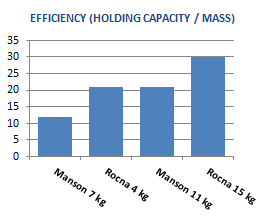
In August 2011, the UK’s Practical Boat Owner published an article by Professor John Knox which included two different size classes of anchor. Across this range of sizes, larger anchors may expect to be more efficient on a weight-for-weight basis than their smaller versions, as their tips may reach deeper and harder substrates. Here, even the baby Rocna 4 (9 lb) is found to give absolute performance comparable to the 7 kg (15 lb) Supreme, and even equals the efficiency of the other Supreme nearly three times larger. Neither of the Manson Supremes can come close to the efficiency of the other, larger, genuine article. The demonstrated differences are consistent, repeatable, and significant. If the copy is cheaper on a price versus weight basis, what value by a price versus performance measure?
Full analyses of the 2006 West Marine and 2011 Practical Boat Owner tests are the subject of the Independent Anchor Performance Testing article to which the reader is directed for more detail.
More On Originals vs. Copies
Patents, utility and design, exist to protect inventions such as new anchor types. Sometimes the copies are technically legal, such as if the patent has expired (e.g. the CQR and Bruce), or if patents were never filed in specific countries. Even if illegal, an expensive fight in court to prove infringement is not usually a practical option to a small company producing anchors.
These issues notwithstanding, a range of nothing but copies in a company’s product line indicates a rather distinct lack of imagination and creativity. The wary customer will consider what other failings exist with the manufacturer who can only copy the developments of others. Anchor design is more subtle than first impression may suggest; there are always important aspects to the original anchor which are critical but may be ignored by the copier in favor of cost cutting.
 Genuine Bruce and Manson “Ray” copy
Genuine Bruce and Manson “Ray” copy“At first glance the genuine Bruce anchor and the look-alikes appear to be the same anchor. Close inspection will reveal that the look-alike is different in a number of disturbing ways. You will find further disturbing features: whereas the genuine Bruce anchor has the same geometry throughout the anchor range, the look-alikes have shank angles that vary widely throughout the anchor range…”
– Bruce Anchor Group; an unfortunate example of copied designers, as the multitude of copies have resulted in the genuine Bruce’s demise. The knock-offs now available are all of inferior quality.
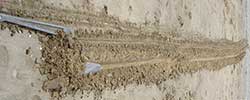 Manson “Plough” failing to set where genuine CQR performed adequately
Manson “Plough” failing to set where genuine CQR performed adequatelyThe Manson “Plough” tests considerably differently to the genuine CQR from which it is copied. Manson began their enterprise with this anchor decades ago, founder Kerry Mair reported by the NZ Herald as looking at the imported CQR and deciding in 1979 they could build a cheaper version. Independent testing illustrates the downside to the cheaper price tag:
The failure of many generic ploughs when compared to the genuine CQR is only commensurate with the less reliable performance of Manson’s “Supreme” that becomes apparent when the look-alike is confronted by Smith’s original design. In light of the construction and design compromises discussed above, it must be considered sensible to avoid copies of all styles.
References
- “Anchors Away” Robin Bailey, NZ Herald September 2002
- “Holding Power” Bill Springer, SAIL October 2006
- “Ultimate Holding Power” Toby Hodges and Bill Springer, Yachting Monthly December 2006
- “Anchors Aware! Anchors On Test” Professor John Knox Practical Boat Owner August 2011
